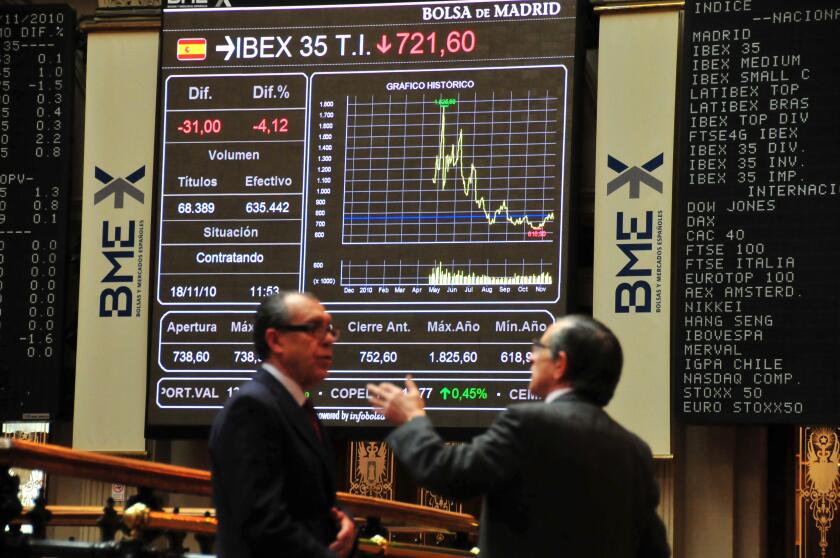Despite a torrid past few months, ABS spreads have held up quite well so far in 2022 versus other asset classes. This means that, though the sell-off has likely created some attractive buying opportunities, the latter stages of the rates reset could be even more painful as investors reallocate back to fixed-rate products.
According to data from PSL, spreads on triple-A European ABS paper are anywhere from 20bp-60bp higher year-to-date, while the average widening in areas such as single-A European auto ABS or double-A Dutch RMBS paper is over 90bp. And another bout of severe volatility over the past week has dashed ABS traders’ hopes that spreads could cement any kind of rebound in the short term.
Yet pain has been widespread across most asset class this year, and this performance is not as bad as most credit markets.
At IMN's Global ABS conference in Barcelona on Thursday, Colm Corcoran, head of ABS trading at Santander, said it was “encouraging” that, “though it’s been weak, it’s outperformed other sectors” — a position echoed by other European ABS traders.
Spread moves in the ABS market have historically lagged wider market indicators, which has protected the asset class from the worst effects of the rising rates environment. Deals take longer to underwrite, investors sometimes mould the deal structure, and so when volatility arrives, they do not necessarily want to sell immediately.
Delaying the recovery
The market has also been supported by the fact that European ABS is largely a floating-rate product. As investors anticipated rate rises, they first cut their exposure to fixed rate products. As this changes, this could make ABS vulnerable to further sell-offs.
Alex Harrison, head of ABS trading at HSBC, said he was concerned that the floating rate aspect of the asset class, which protected ABS in the early part of the move, would eventually leave it out of favour.
“As and when we reach the point of inflection in the rates cycle where people start viewing that it’s gone as far as it’s going to go, do we then see that technical go the other way?” he asked.
Some say this is already happening and was behind the particularly tough April and May that ABS secondary markets suffered. It could delay the recovery in ABS once broader markets start to stabilise.
“If the iTraxx Crossover were to stabilise, typically we’d see two to three weeks of widening on our side [before stabilising],” said Eric Huang, an ABS, MBS and CLO trader at Société Générale. “But because, for real money guys, the first move in any kind of rally is to go from floating into fixed rate products, there’s a decent chance that the lag could be even longer than what we’ve typically experienced.”
So far, consumer credit quality, which underpins large swathes of the asset class, has not been overly affected by the macroeconomic headwinds. But there is also a lag in impact here, and as inflation climbs, it is another reason to be cautious.
“Obviously there’ll be an impact from rates on consumer credit quality […] but it has not yet come to pass,” said Huang at SocGen. “I think we are probably set for further stresses as the market digests both of the impacts on asset quality and portfolio flows over the next six to nine months.”
No time for heroes
More optimistically, traders noted that this year’s sell-off had been far more orderly and gradual than previous downturns, such as the Covid-19 pandemic in 2020. This gave optimism that there are investors ready to step in to take advantage of value at some point.
“At the end of the day it’s a real opportunity for investors,” said Corcoran at Santander. “We’ve got a higher spread environment, so there’ll be less issuance, which should mean supportive technicals, and higher underlying yields could also see a return of investors who’d been sidelined [during the low rates era].
“We’ll be restarting at levels that look very attractive.”
The more gradual sell-off has given investors more time to do the credit work that ABS requires, and the traders reported rumours of new investor types getting ready to enter the market. Some particularly badly hit sectors, such as CLOs, should self-regulate as issuance stalls.
But it is not clear that it is time to take any opportunity.
“I can understand if you want to buy risk, but in the two to four week timeframe I think spreads will continue to widen,” said Huang at SocGen. “There’s certainly a case to buy paper but it’s not a time to be hero. Mildly adding risk makes sense but I don’t think anyone wants to reach for the longest duration or hairiest profile.”
The picture should become clearer very soon, given the pace of developments in central bank policy in both the US and Europe.
“It’s hard to pin down where value is because literally this week, right now, we’re at another inflection point for pricing,” said Harrison at HSBC. “How much of the moves that we’ve seen [in broader markets] will be seen in ABS once we’re back at the office tomorrow and working out where things should be?
